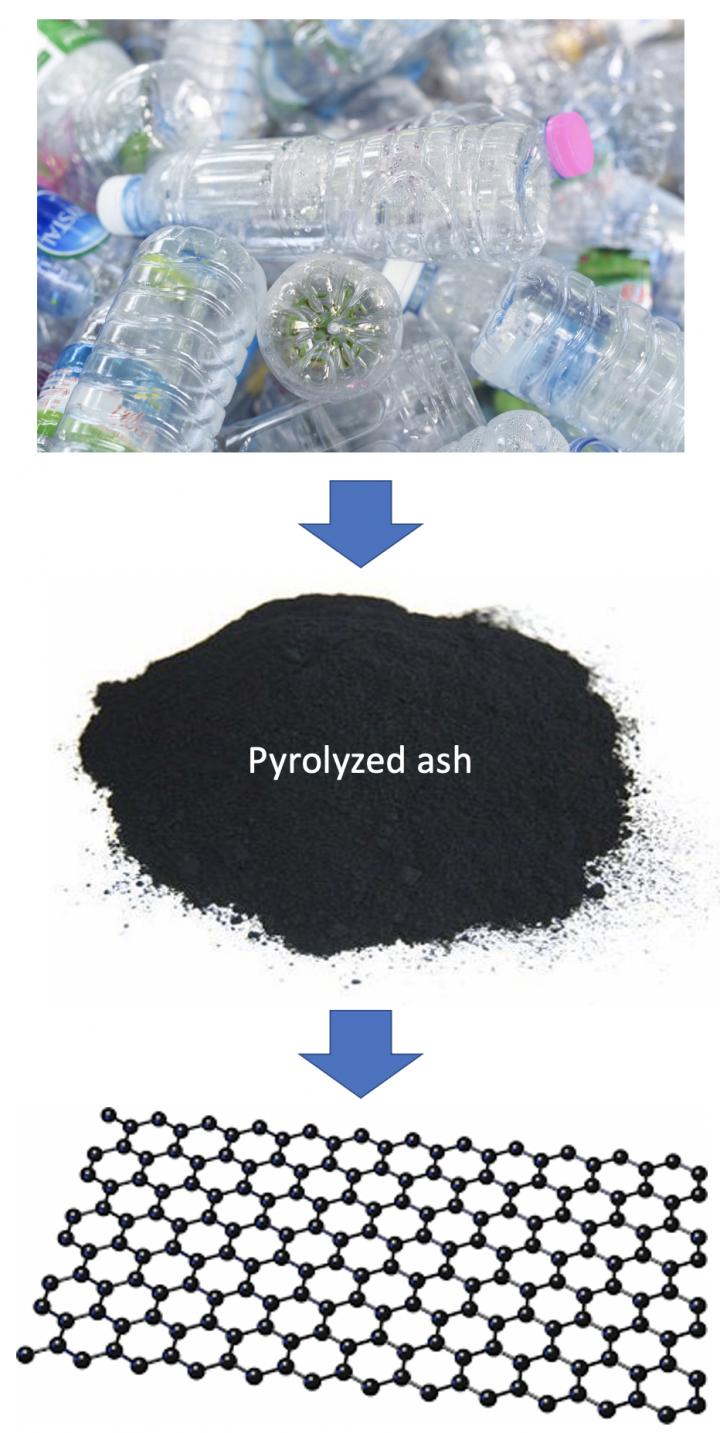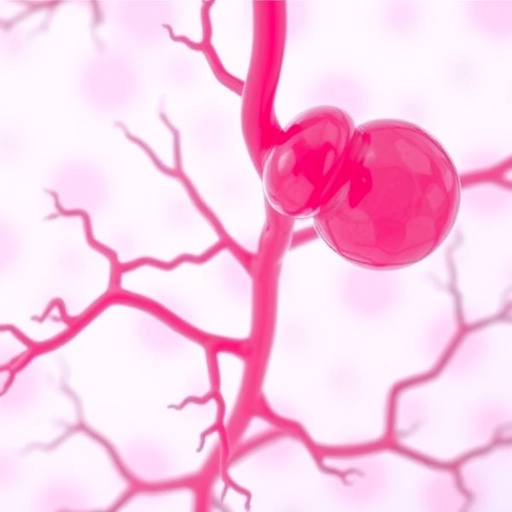Rice lab’s turns pyrolyzed ash into graphene for improving concrete, other compounds

Credit: Tour Group/Rice University
HOUSTON – (Jan. 13, 2021) – Pyrolyzed plastic ash is worthless, but perhaps not for long.
Rice University scientists have turned their attention to Joule heating of the material, a byproduct of plastic recycling processes. A strong jolt of energy flashes it into graphene.
The technique by the lab of Rice chemist James Tour produces turbostratic graphene flakes that can be directly added to other substances like films of polyvinyl alcohol (PVA) that better resist water in packaging and cement paste and concrete, dramatically increasing their compressive strength.
The research appears in the journal Carbon.
Like the flash graphene process the lab introduced in 2019, pyrolyzed ash turns into turbostratic graphene. That has weaker attractive interactions between the flakes, making it easier to mix them into solutions.
Last October, the Tour lab reported on a process to convert waste plastic into graphene. The new process is even more specific, turning plastic that is not recovered by recycling into a useful product.
“This work enhances the circular economy for plastics,” Tour said. “So much plastic waste is subject to pyrolysis in an effort to convert it back to monomers and oils. The monomers are used in repolymerization to make new plastics, and the oils are used in a variety of other applications. But there is always a remaining 10% to 20% ash that’s valueless and is generally sent to landfills.
“Now we can convert that ash into flash graphene that can be used to enhance the strength of other plastics and construction materials,” he said.
Pyrolysis involves heating a material to break it down without burning it. The products of pyrolyzed, recycled plastic include energy-rich gases, fuel oils, waxes, naphtha and virgin monomers from which new plastic can be produced.
But the rest — an estimated 50,000 metric tons in the United States per year — is discarded.
“Recyclers do not turn large profits due to cheap oil prices, so only about 15% of all plastic gets recycled,” said Rice graduate student Kevin Wyss, lead author of the study. “I wanted to combat both of these problems.”
The researchers ran a pair of experiments to test the flashed ash, first mixing the resulting graphene with PVA, a biocompatible polymer being investigated for medical applications, fuel cell polymer electrolyte membranes and environmentally friendly packaging. It has been held back by the base material’s poor mechanical properties and vulnerability to water.
Adding as little as 0.1% of graphene increases the amount of strain the PVA composite can handle before failure by up to 30%, they reported. It also significantly improves the material’s resistance to water permeability.
In the second experiment, they observed significant increases in compressive strength by adding graphene from ash to Portland cement and concrete. Stronger concrete means less concrete needs to be used in structures and roads. That curtails energy use and cuts pollutants from its manufacture.
###
Co-authors of the study are Rice graduate students Jacob Beckham, Weiyin Chen and Prabhas Hundi and postdoctoral researcher Duy Xuan Luong, and Shivaranjan Raghuraman and Rouzbeh Shahsavari of C-Crete Technologies.
The National Science Foundation, the Air Force Office of Scientific Research and the Department of Energy supported the research.
Read the abstract at https:/
This news release can be found online at https:/
Follow Rice News and Media Relations via Twitter @RiceUNews.
Related materials:
Tour Group: http://www.
Department of Chemistry: https:/
Wiess School of Natural Sciences: https:/
Images for download:
https:/
Rice University chemists turned otherwise-worthless pyrolyzed ash from plastic recycling into graphene through a Joule heating process. The graphene could be used to strengthen concrete and toughen plastics used in medicine, energy and packaging applications. (Credit: Tour Group/Rice University)
Located on a 300-acre forested campus in Houston, Rice University is consistently ranked among the nation’s top 20 universities by U.S. News & World Report. Rice has highly respected schools of Architecture, Business, Continuing Studies, Engineering, Humanities, Music, Natural Sciences and Social Sciences and is home to the Baker Institute for Public Policy. With 3,978 undergraduates and 3,192 graduate students, Rice’s undergraduate student-to-faculty ratio is just under 6-to-1. Its residential college system builds close-knit communities and lifelong friendships, just one reason why Rice is ranked No. 1 for lots of race/class interaction and No. 1 for quality of life by the Princeton Review. Rice is also rated as a best value among private universities by Kiplinger’s Personal Finance.
Jeff Falk
713-348-6775
[email protected]
Mike Williams
713-348-6728
[email protected]
Media Contact
Jeff Falk
[email protected]
Original Source
https:/
Related Journal Article
http://dx.




